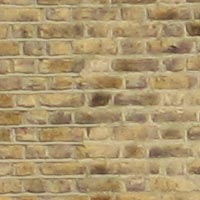Canon Digital IXUS 70 Review
(also known as the Canon Powershot SD1000)
Review Date: April 9th 2007
Leave a comment about this Review
|
Image Quality
All of the sample images in this Review were captured using the Superfine JPEG setting with the large (3072 x 2304 / 7.1M) image size option producing a file that is between 2-4Mb.
Noise
The Canon Digital IXUS 70 has 7 ISO settings. There is virtually no discernible noise at the slowest settings of ISO 80, 100 and 200, but noise and slight loss of detail is apparent at ISO 400, particularly in the shadow areas. At ISO 800 image quality has deteriorated quite a lot as the camera blurs detail to try and hide the noise. ISO 1600 should really be avoided at all costs. Here are some 100% crops which show the noise levels for each ISO setting.
ISO 80 (100% Crop) |
ISO 100 (100% Crop) |
 |
 |
ISO 200 (100% Crop) |
ISO 400 (100% Crop) |
 |
 |
ISO 800 (100% Crop) |
ISO 1600 (100% Crop) |
 |
 |
Sharpening
Here are two 100% crops which have been Saved as Web - Quality 50 in Photoshop. The right-hand image has had some sharpening applied in Photoshop. The out-of-the camera images at the default setting are soft and benefit from some further sharpening in a program like Adobe Photoshop. Alternatively you can change the in-camera sharpening level if you don't like the default results.
Original
(100% Crop)
|
Sharpened (100% Crop) |
 |
 |
 |
 |
Chromatic Aberrations
The Canon Digital IXUS 70 handled chromatic aberrations quite well during the review, with some limited purple fringing present around the edges of objects in certain high-contrast situations. Here are some 100% crops which show the typical chromatic aberrations that you can expect:
|
Chromatic
Aberrations (100% Crop)
|
Chromatic
Aberrations (100% Crop)
|
 |
 |
Macro
The Canon Digital IXUS 70 offers a Macro setting that allows you to focus on a subject that is 3cms away from the camera. The first image shows how close you can get to the subject in Macro mode (in this case a compact flash card). The second image is a 100% crop.
|
Macro Shot |
Macro Shot (100% Crop) |
 |
 |
Flash
The flash settings on the Canon Digital IXUS 70 are Auto, On, Auto Red-eye Reduction, Slow Synchro and Off. These shots of a white coloured wall were taken at a distance of 1.5m.
|
Flash Off - Wide Angle (35mm) |
Auto Flash - Wide Angle (35mm) |
 |
 |
|
Flash Off - Telephoto (105mm) |
Auto Flash - Telephoto (105mm) |
 |
 |
And here are some portrait shots. As you can see, the Flash On setting caused a small amount of red-eye, with the Red-Eye Reduction option virtually removing it.
|
Flash On |
Flash On (100% Crop) |
 |
 |
|
Flash - Red-Eye Reduction |
Flash - Red-Eye Reduction (100% Crop) |
 |
 |
Night Shot
The Canon Digital IXUS 70's maximum shutter speed is 15 seconds in Long Shutter Mode, which is good news if you're interested in night photography. The shot below was taken using a shutter speed of 0.5 second, aperture of f/4.9 at ISO 80. I've included a 100% crop of the image to show what the quality is like.
|
Night Shot |
Night Shot (100% Crop) |
 |
 |
Overall Image Quality
The Canon Digital IXUS 70 produced images of good quality during the review period. As expected from previous use of Canon cameras, colours are naturalistic bordering on warm, especially when it comes to skin tones, which is no bad thing. And of course there's the added ability to adjust these in camera if so wished. The Canon Digital IXUS 70 dealt quite well with chromatic aberrations, with limited purple fringing effects appearing only in high contrast situations. The built-in flash worked well indoors, with a small amount of red-eye and good overall exposure. The night photograph was good, with the maximum shutter speed of 15 seconds allowing you to capture enough light in most situations. Macro performance is above average, allowing you to focus as close as 3cms away from the subject. The 7 megapixel images were quite soft straight out of the camera at the default sharpening setting and ideally require some further sharpening in an application like Adobe Photoshop, or you can change the in-camera setting. Utilising the new face detection feature didn't make a great deal of difference if I'm being honest, as there's the tendency of the user to pre-focus on the subject � and obviously a face if taking a portrait � before fully pressing the shutter button anyway. The Canon Digital IXUS 70 produces noise-free images at ISO 80, 100 and 200, with ISO 400 showing some noise and slight blurring of detail. ISO 800 has quite visible noise and ISO 1600 is best avoided at all costs.
|
![]() PhotographyBLOG
is a member of the DIWA
organisation. Our test results for the Canon Digital IXUS
70 have been submitted to DIWA
for comparison with test results for different samples of
the same camera model supplied by other DIWA
member sites.
PhotographyBLOG
is a member of the DIWA
organisation. Our test results for the Canon Digital IXUS
70 have been submitted to DIWA
for comparison with test results for different samples of
the same camera model supplied by other DIWA
member sites.
